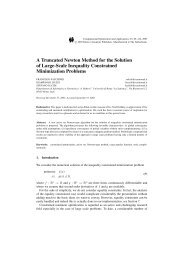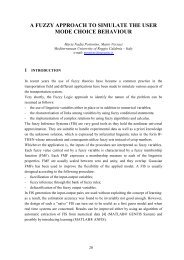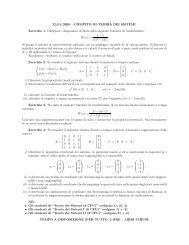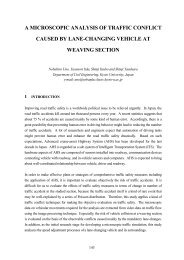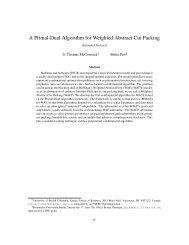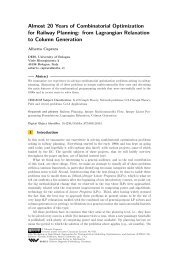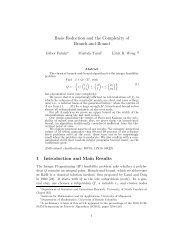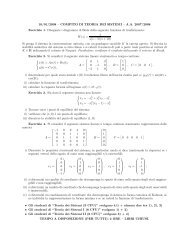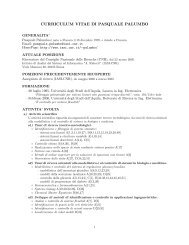GENERATING DENSE RAILWAY SCHEDULES 1. Introduction
GENERATING DENSE RAILWAY SCHEDULES 1. Introduction
GENERATING DENSE RAILWAY SCHEDULES 1. Introduction
Create successful ePaper yourself
Turn your PDF publications into a flip-book with our unique Google optimized e-Paper software.
Generating dense railway schedules 293<br />
P1<br />
P3<br />
T<br />
P2<br />
Figure 2. Petri Net of two train runs. Both trains share a single track area represented<br />
by the place P3. The train departures are synchronised by the transition T.<br />
order makes the Petri Net decision free, see Figure 3. A decision free Petri Net is called<br />
event graph and can be evaluated easily. In particular, the shortest possible cycle time<br />
of the Petri Net, i.e. the minimum time needed to return to the initial state of the net,<br />
and a corresponding timetable which achieves this minimum can be calculated efficiently<br />
applying the policy iteration algorithm [4]. The optimisation problem to solve consists<br />
of determining train precedence orders for entering the stretches in such a way that the<br />
resulting event graph has minimum cycle time.<br />
P1<br />
P3<br />
P4<br />
P2<br />
T<br />
Figure 3. Transformation of Petri Net of Figure 2 into an event graph. The first train<br />
has precedence as the token is initially in P3.<br />
3. Deadlocks in Event Graphs<br />
An event graph is deadlocked if it contains a tokenless oriented circuit. In this case, the<br />
cycle time of the event graph is∞and the corresponding timetable is infeasible since there<br />
is at least one transition that has a precondition for firing that is never met.<br />
If local train precedence orders are chosen randomly, the probability of obtaining a<br />
deadlock free event graph tends exponentially in the number of trains to zero. Therefore,



